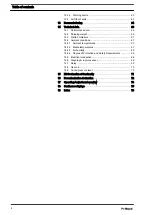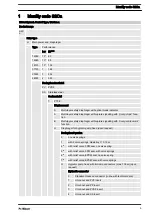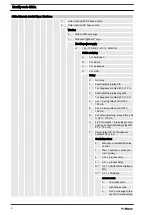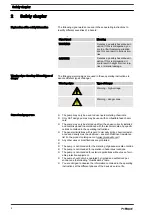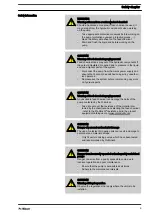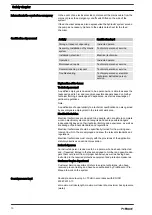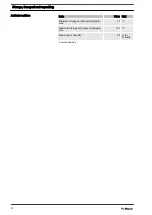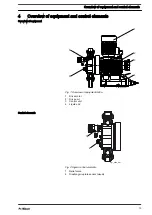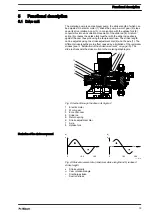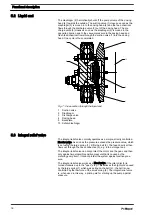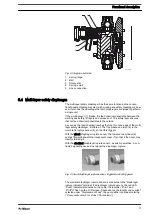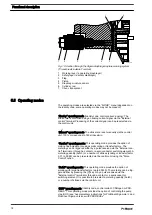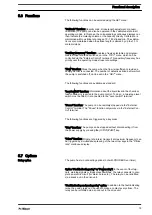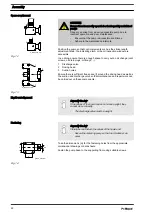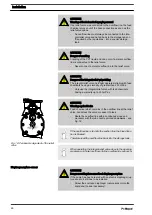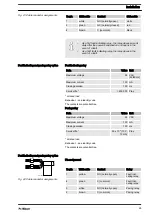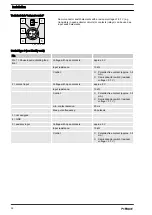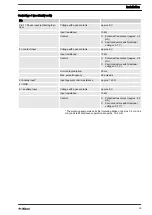
7
6
5
4
3
2
1
P_SI_0020_SW
Fig. 10: Section through the Sigma diaphragm rupture warning system
("Visual break indicator" version)
1
Working layer (≙ operating diaphragm)
2
Safety layer (≙ safety diaphragm)
3
Flap
4
Piston
5
Diaphragm rupture sensor
6
Cylinder, red
7
Cover, transparent
5.5 Operating modes
The operating modes are selected via the
“MODE”
menu (dependent on
the identity code, some operating modes may not be present):
“Analog”
operating mode (Identity code, control variant: analog). The
stroke rate is controlled using an analog current signal via the "External
control" terminal Processing of the current signal can be preselected via
the control unit.
“Manual”
operating mode The stroke rate is set manually via the control
unit. 100 % corresponds to 180 strokes/min.
“Contact”
operating mode: This operating mode provides the option of
making fine adjustments using small scaling or transfer factors. The
metering can be triggered either by a pulse received via the "External con‐
trol" terminal or through a contact or a semiconductor switching element. A
metering quantity (batch) or a number of strokes (scaling or transfer factor
0.01 to 99.99) can be pre-selected via the control unit using the "Pulse
Control" option.
“Batch”
operating mode: This operating mode provides the option of
working with large transfer factors (up to 65535). The metering can be trig‐
gered either by pressing the
[P]
key or by a pulse received via the
"External control" terminal or through a contact or a semiconductor
switching element. It is possible to pre-select a metering quantity (batch)
or a number of strokes via the control unit.
“BUS”
operating mode (Identity code, control variant: CANopen or PRO‐
FIBUS
®
This operating mode provides the option of controlling the pump
via a BUS (see “Supplementary instructions for ProMinent® gamma/ L and
ProMinent Sigma versions with PROFIBUS
®
".
Functional description
18

